THIRD (DELAYED) PROBLEM SET FOR 18.155
advertisement
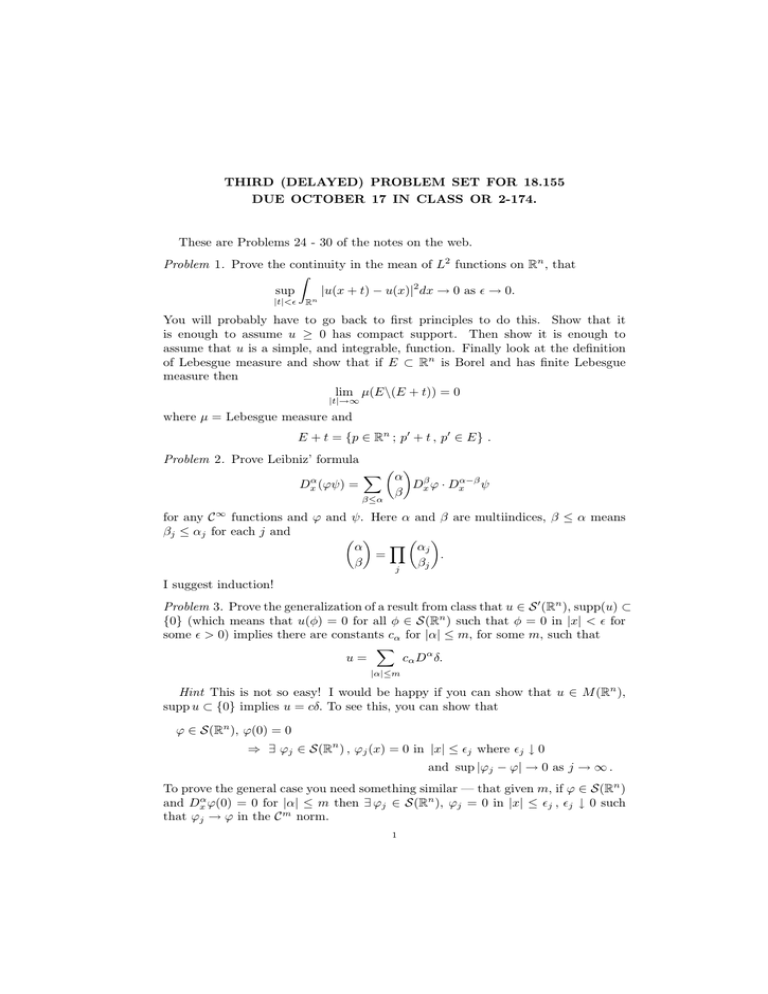
THIRD (DELAYED) PROBLEM SET FOR 18.155
DUE OCTOBER 17 IN CLASS OR 2-174.
These are Problems 24 - 30 of the notes on the web.
Problem 1. Prove the continuity in the mean of L2 functions on Rn , that
Z
sup
|u(x + t) − u(x)|2 dx → 0 as → 0.
|t|<
Rn
You will probably have to go back to first principles to do this. Show that it
is enough to assume u ≥ 0 has compact support. Then show it is enough to
assume that u is a simple, and integrable, function. Finally look at the definition
of Lebesgue measure and show that if E ⊂ Rn is Borel and has finite Lebesgue
measure then
lim µ(E\(E + t)) = 0
|t|→∞
where µ = Lebesgue measure and
E + t = {p ∈ Rn ; p0 + t , p0 ∈ E} .
Problem 2. Prove Leibniz’ formula
Dxα (ϕψ)
=
X α β≤α
β
Dxβ ϕ · Dxα−β ψ
∞
for any C functions and ϕ and ψ. Here α and β are multiindices, β ≤ α means
βj ≤ αj for each j and
Y α
αj
=
.
β
βj
j
I suggest induction!
Problem 3. Prove the generalization of a result from class that u ∈ S 0 (Rn ), supp(u) ⊂
{0} (which means that u(φ) = 0 for all φ ∈ S(Rn ) such that φ = 0 in |x| < for
some > 0) implies there are constants cα for |α| ≤ m, for some m, such that
X
u=
cα Dα δ.
|α|≤m
Hint This is not so easy! I would be happy if you can show that u ∈ M (Rn ),
supp u ⊂ {0} implies u = cδ. To see this, you can show that
ϕ ∈ S(Rn ), ϕ(0) = 0
⇒ ∃ ϕj ∈ S(Rn ) , ϕj (x) = 0 in |x| ≤ j where j ↓ 0
and sup |ϕj − ϕ| → 0 as j → ∞ .
To prove the general case you need something similar — that given m, if ϕ ∈ S(Rn )
and Dxα ϕ(0) = 0 for |α| ≤ m then ∃ ϕj ∈ S(Rn ), ϕj = 0 in |x| ≤ j , j ↓ 0 such
that ϕj → ϕ in the C m norm.
1
2 THIRD (DELAYED) PROBLEM SET FOR 18.155 DUE OCTOBER 17 IN CLASS OR 2-174.
0
Problem 4. If m ∈ N, m0 > 0 show that u ∈ H m (Rn ) and Dα u ∈ H m (Rn ) for all
0
|α| ≤ m implies u ∈ H m+m (Rn ). Is the converse true?
Problem 5. Show that every element u ∈ L2 (Rn ) can be written as a sum
n
X
u = u0 +
Dj uj , uj ∈ H 1 (Rn ) , j = 0, . . . , n .
j=1
Problem 6. Consider for n = 1, the locally integrable function (the Heaviside function),
0 x≤0
H(x) =
1 x > 0.
Show that Dx H(x) = cδ; what is the constant c?
Problem 7. For what range of orders m is it true that δ ∈ H m (Rn ) , δ(ϕ) = ϕ(0)?
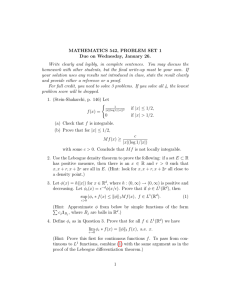
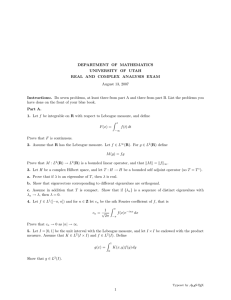
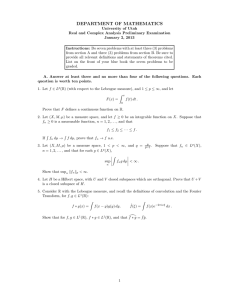
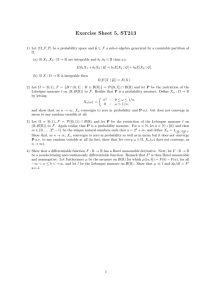
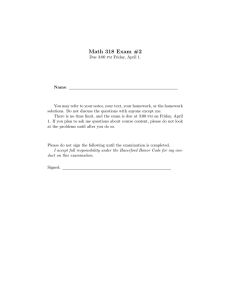

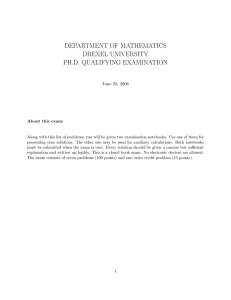
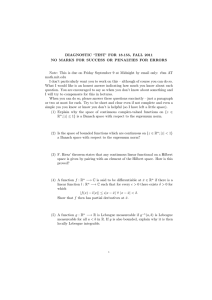
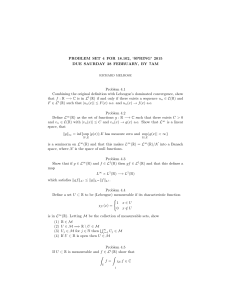
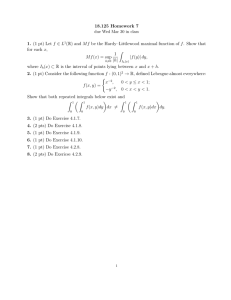
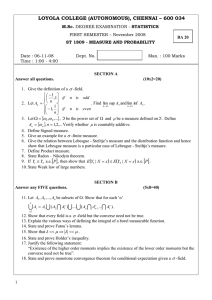
![18.125 Homework 10 : [0, 1] → [0, 1]](http://s2.studylib.net/store/data/010491524_1-2ff13645829ce7088147b1ea2705ee77-300x300.png)